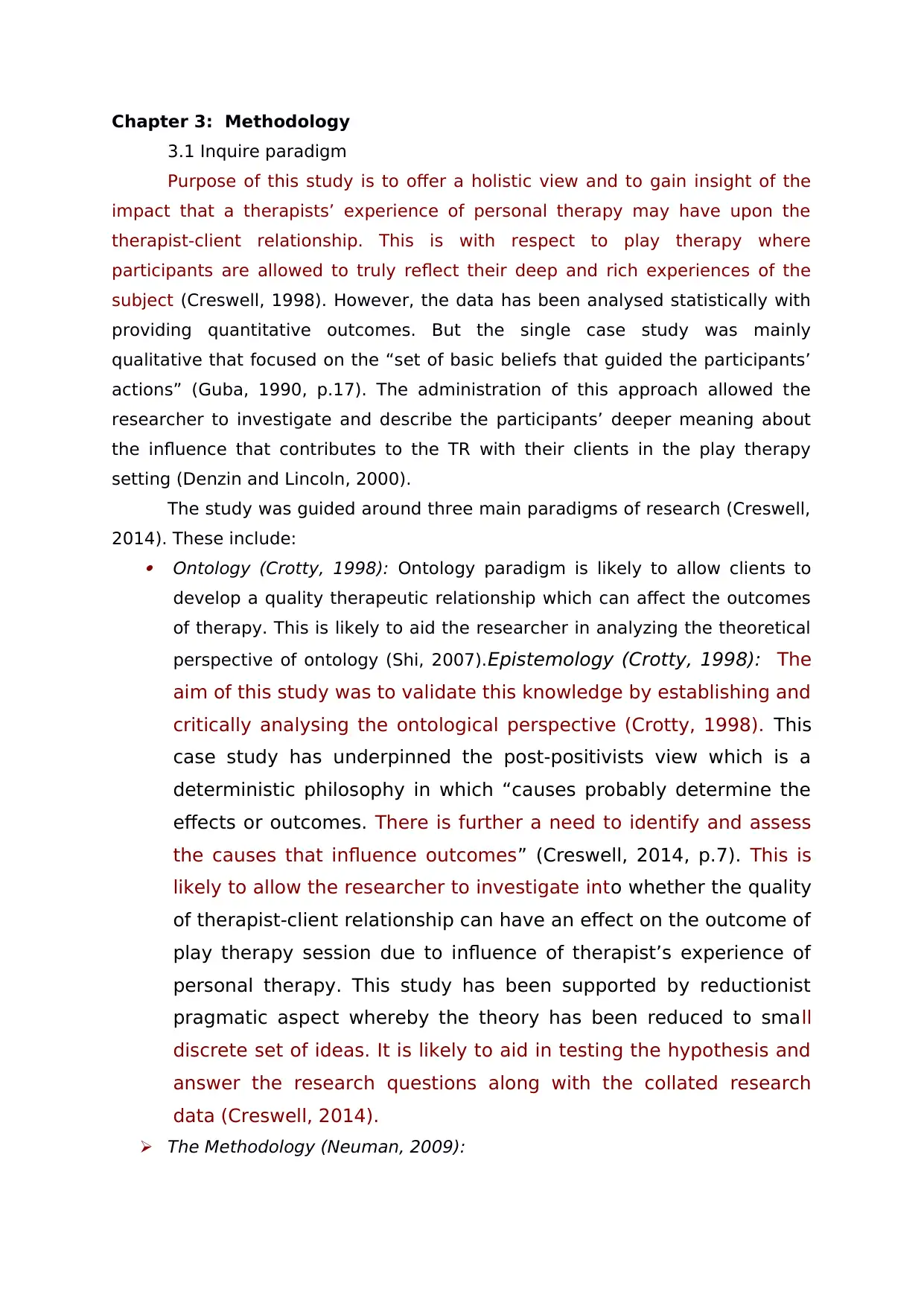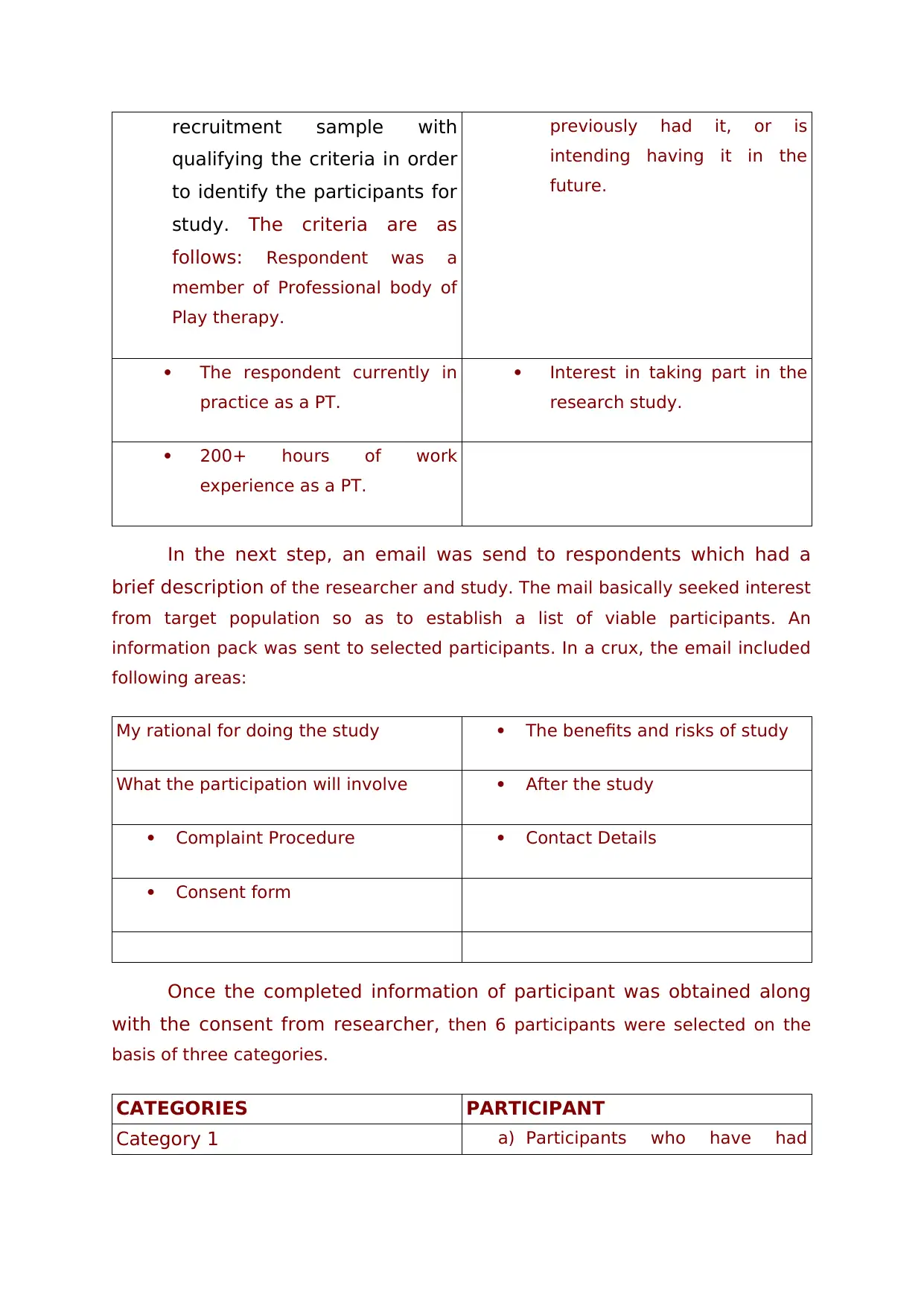Critique of Research Design and Participant Recruitment
VerifiedAdded on 2019/12/03
|4
|1199
|164
Essay
AI Summary
The assignment content discusses a study that aims to investigate the impact of personal therapy on play therapists' experiences, perspectives, and approaches in their professional work. The study employed a mixed-method approach, involving both quantitative (close-ended questionnaire) and qualitative (open-ended semi-structured interviews) data collection methods. A sample of 6 play therapists was recruited, divided into three categories based on their past or intended experience with personal therapy. The study aims to provide insights into the therapeutic experiences and perspectives of play therapists, and how these are influenced by their own personal therapy experiences.
Contribute Materials
Your contribution can guide someone’s learning journey. Share your
documents today.
1 out of 4










![[object Object]](/_next/static/media/star-bottom.7253800d.svg)